What is hydroa vacciniforme?
Hydroa vacciniforme is one of the rarest forms of photosensitivity skin disease. Affects the sunexposed skin and is characterized by recurrent fluid-filled blisters (“hydroa”) that heal with smallpox scars (“shotgun”).
Hydroa vacciniforme
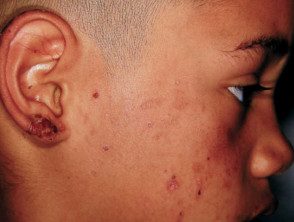
Hydroa vacciniforme
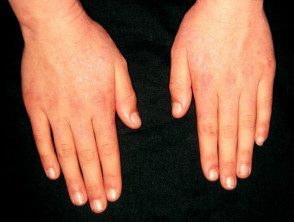
Hydroa vacciniforme
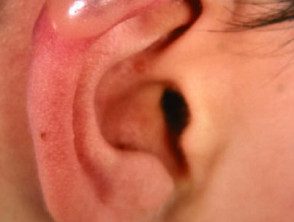
Hydroa vacciniforme
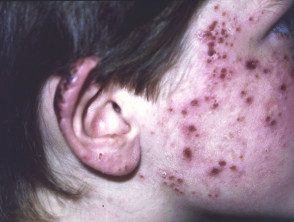
Hydroa vacciniforme
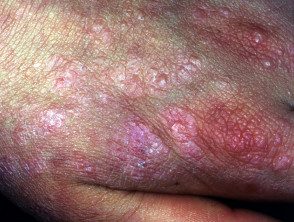
Hydroa vacciniforme
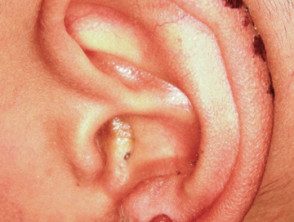
Hydroa vacciniforme
Who receives hydroa vacciniforme?
Hydroa vacciniforme mainly affects children from 3 to 15 years old. It is more commonly diagnosed in women than in men. The disease tends to appear later and to have a longer course in men.
What is the cause of hydroa vacciniforme?
The cause of hydroa vacciniforme is generally unknown. Long wavelength Ultraviolet radiation (UVA) is more frequently implicated.
In some cases, vacciniform hydroa has been associated with Epstein-Barr virus (EBV) infection, which normally results in glandular fever (infectious mononucleosis). In these cases, vacciniform hydroa lesions can spread to involve areas that are not exposed to the sun.
What are the clinical characteristics of hydroa vacciniforme?
The areas exposed to the sun are the most affected and include the face, ears, hands and lower extremities. In most cases, signs and symptoms generally begin to appear approximately 30 minutes to 2 hours after sun exposure and present as:
- Mild burning, itching, or stinging
- Development of tense and swollen bumps (papules) and blisters (vesicles); there may be facial swelling
- These become dimpled, pit-shaped papules with black crusts (necrosis) on a red and inflamed base
- Lesions heal to form pale depressed scars
the eruption it usually appears for the first time in spring with recurrences during the summer months.
Some patients may have other symptoms, even mild ones. inflammation of the eyes (keratoconjunctivitis and photophobia), nail and toenail removal (photo-onycholysis) and rarely fever and discomfort. Exaggerated reactions to insect bites are frequent and can cause skin necrosis and ulceration.
Severe EBV infection associated with hydroa vacciniforme has resulted in lymphoproliferative disorders (non-Hodgkin NK cells lymphoma or leukemia) and can have a fatal outcome.
How is vacciniform hydroa diagnosed?
Hydroa vacciniforme may be clinically suspected. A skin biopsy It may show characteristic pathological features of hydroa vacciniforme.
The status of the VEB must be evaluated.
What is the treatment for hydroa vacciniforme?
In most patients, the condition disappears when they reach adolescence, although the scars are permanent. Patients with hydroa vacciniforme should take measures to avoid sun exposure by following sun protection strategies. This includes applying SPF 50+ sunscreens with UVA blocking agents and wearing protective clothing. This can prevent or reduce the number of recurrences of the condition.
Oral medication may be helpful in reducing flare-ups, but it does not reliably prevent vacciniform hydroa lesions.
- The most widely used are oral antimalarials, such as hydroxychloroquine.
-
Oral antioxidants like beta carotene can also help.
Narrowband UVB phototherapy or photochemotherapy (PUVA) has also been used to confer photoprotection and desensitization.

